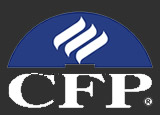May 16, 2018
Of all the questions we have with clients one of the most frequent is something related to how much money can they safely take from their investments without running out of money too early. In the Financial Planning profession, there have been books, papers, studies and in the end, entire careers made from this very question. This is known as the safe withdrawal rate and it is usually expressed as a percentage. Daily, someone somewhere in the industry questions the current “safe withdrawal rate” as being one of two things; too conservative or too dangerous.
As many of you know I subscribe to a 5% rate with a couple of caveats. We must be flexible in our spending, we must watch when and what we sell to fund the withdrawals, and lastly, we must keep some money in a relatively safe bucket to protect against the sequence of returns problem. So I was pleasantly surprised to read a Vanguard Continuing Education module that covered this exact issue with some common sense and without the usual, incessant, and predictable push for more annuity sales.
You see, most public discussions about the safe withdrawal rate start and end with an annuity company trying to sell a stream of income from, lo and behold, one of their very own, high-priced products that take a large chunk of your money out of those “risky markets.” Annuities seem to be the last frontier where insurance companies can actually make money.
Anyway, the Vanguard’s Continuing Education module[i] had four “levers” that affect how much to spend from a portfolio. Here is a synopsis:
- Investor Time Horizon: The longer you are going to be withdrawing money from the portfolio the lower the withdrawal rate. If you are going to retire in your 50’s you can’t start taking a bunch of principal from your portfolio. Conversely, if you love work and plan on earning clear into your 70’s, then, of course, your rate can be much higher.
- Spending Flexibility: There will be times when the markets are in decline (remember 2008?) and we need to slow the withdrawal rate. The more flexible you can be with your spending habits the more you can consistently withdraw since you can wait out the market hiccups that inevitably occur. Withdrawals during years like 2008 can wreak havoc on portfolios.
- Portfolio Asset Allocation: The more aggressive you can be in your portfolio the more it will grow over time. The more conservative you are with your asset allocation the less you can withdrawal. It is mathematically impossible to invest in an asset that makes 1% and withdrawal 5% without drawing down the principal.
- Degree of Certainty Desired: The greater your need for certainty, then the lower your withdrawal amount. If you absolutely positively must know that you will not, under any circumstance ever run out of money, then you need to lower your withdrawal amount. If you have a Monte Carlo simulation that shows a 95% chance of success—and that is still not good enough for you to sleep at night—then you need to lower your withdrawal rate drastically.
There you have it. I must admit that it feels good when a concept you have thought and taught gets validated from an outside source. Validation not from some Advisor writing a paper to get published in an industry magazine, but an outside source that just happens to be the largest fund company in the world.
My bottom line with this month’s email: once we realize and accept that nothing is set in stone, and rules that we make and use as a guide, are simply that, a guide. Like a roadmap where we can take alternative routes due to road closures, we can change our financial guide based on current, short-term events.
With that proviso, we should be perfectly fine with our 5% withdrawal rate and our 3% per year COLA. We use this rate and we remember to add a bit of common sense. If the markets give us a 15 to 20% year like 2017 then maybe we give ourselves a raise. If the market gives us another 2008 doomageddin then perhaps we take less than the 5% that year and use our non-market based investments for funding that year. And we don’t buy a new Benz or take that awesome sailing trip to Croatia that year either.
Thanks for reading, MK
[i] Vanguard’s Roadmap to Financial Security: A Framework for Decision-making in Retirement Vanguard Research / March 2018 https://advisors.vanguard.com/iwe/pdf/ISGRFS.pdf?cbdForceDomain=true


